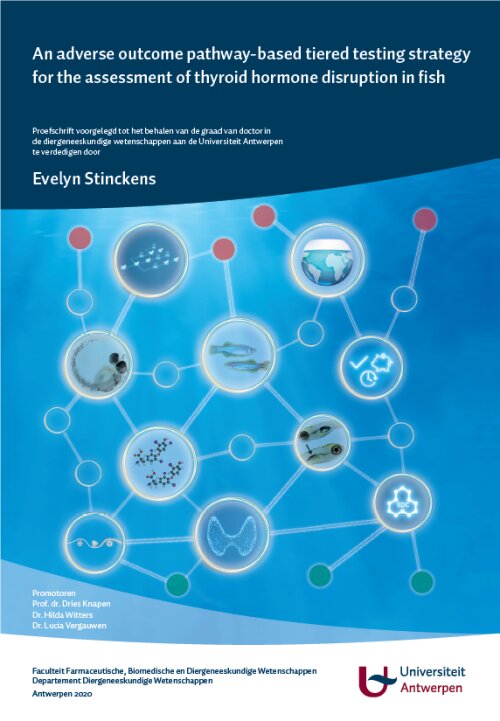An adverse outcome pathway-based tiered testing strategy for the assessment of thyroid hormone disruption in fish
Evelyn Stinckens, MSc, PhD
Date: 22nd September 2020 at 5PM
Location: online

Abstract
Thyroid hormones (THs) play a crucial role in the regulation of vertebrate development and homeostatic processes. A growing number of environmental pollutants are known to adversely affect the TH system. Disruption of this system is increasingly being recognized as an important endocrine disrupting mode of action that can cause a wide variety of adverse effects.
Major gaps have been identified in the tools available for the hazard and risk assessment of TH disrupting substances. The scientific community is currently challenged with developing new or improved testing approaches to evaluate TH disruption in fish. Therefore, the overall aim of this thesis was the development of a tiered testing strategy for the assessment of TH disruption in fish. We used the Adverse Outcome Pathway (AOP) framework for guiding our work.
First, we constructed AOPs leading from thyroperoxidase (TPO, essential for TH synthesis) and deiodinase (DIO, critical for TH activation) inhibition to impaired swim bladder inflation of zebrafish and fathead minnow through decreased thyroid hormone concentrations, ultimately affecting survival probability and population growth.
Next, we provided additional biological and toxicological data supporting the mechanisms and processes captured in the AOPs. We performed in chemico assays targeting the specific molecular initiating events, DIO and TPO inhibition, and we evaluated the use of the resulting in chemico data for predicting higher level in vivo endpoints. We demonstrated that the combined information of the enzyme inhibition assays can be used as a tool to reliably predict the biological effects on swim bladder inflation with only few outliers. This work thus provides an example of how the AOP framework and associated data generation can address current TH disruption testing challenges in the context of fish early-life stage assays, and fish tests in general.
Finally, we demonstrate how different assays covering essential biological processes along the continuum of the AOP network can be implemented in a tiered screening and testing approach for TH disruption in fish. The addition of the associated assays to existing test guidelines allows to increase their diagnostic value for the assessment of TH disruption. Further expanding the applicability domain of our AOP network would be of great value for screening and testing of TH disrupting compounds.